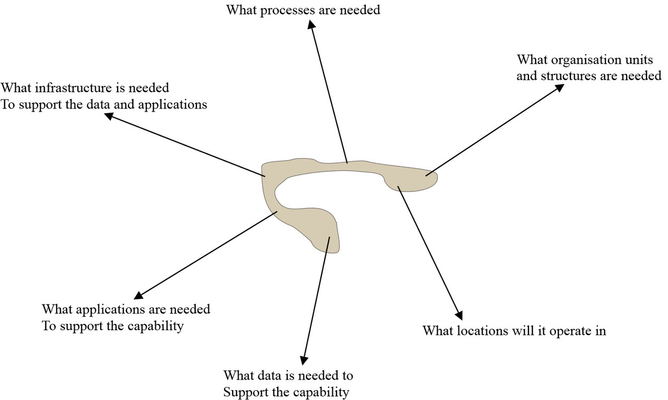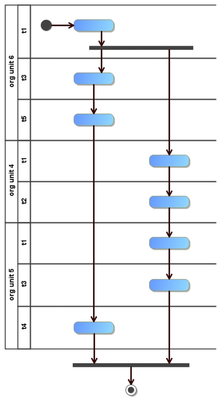Introduction
...
In this example you are measuring how capable the builder is using a number of criteria as listed above, and not your measurement isn't based upon just the service they offer. So a capability is more than a service or a function!
Use the following statement as a guide to yourthinking "being able to do building work doesn't make you a competent builder". Most people can run (to some degree), this doesn't make them a competent runnersrunner, that competency comes from training, eating well and plenty of sleep. In other words there are a number of key characteristics that must be developed in order to enable that capability (see comment 1 below).
...
Alternatively one could choose to define capability using the architectural unification approach POLDAT
- Process (business processes)
- Organisation (structures)
- Location (Geographical information)
- Data (models, life cycles, security etc)
- Application (software, security, interoperability etc)
- Technology (infrastructure)
Both TEPIDOIL and POLDAT pay no attention to organisation unit boundaries (business unit, sector, service, function etc) but weave a conceptual path through segments of the enterprise, selecting those areas within those segments that, deliver the characteristics needed by the capabilities to deliver the outcome.
More often than not, a goal an outcome is delivered through multiple capabilities
...
We can now start to see that as we weave through the different parts of the organisation we need to ask the following questions (to help define the nature and characteristics of a capability)
So in actual fact, the
...
outcome is delivered through a set of POLDATs that execute in defined manner
| Info |
|---|
| What this reveals is that within industry sectors capabilities can be defined based upon delivering certain goalsas the mechanisms required to deliver specific outcomes. Organisations may then trade, acquire or partner with other organisations based upon the mutual understanding of those capabilities. The implementation is irrelevant for this is not what we are measuring, we are measuring strengths and weaknesses using something like POLDAT or TEPIDOIL attributes. |
...
Our next task is to try and illustrate this weaving nature that we have described above? One approach that we are currently trying is to map the thread through a UML activity model. We are not using it to map a process flow but to simply illustrate the way in which a number of entities must collaborate to realise the capability. In our illustration we use swimlanes to provide a visual way of representing organisational units and other sub units (do not confuse this model with value stream mapping, that is not what we are doing).
...
Each blue round tangle represents an activity or set of activities being executed (remember we are not mapping process flow)
In this example we show multiple capability paths delivering a goal |
|---|
So how does this help me
That's a very good question and it depends on your perspective; there are several advantages that I would like to describe and I am sure that you can think of others.
...
In this context the partners will have some clearly defined goals but, they will have similar or even the same set of capabilities which makes it easier to do like for like comparisons, allowing you to ignore the physical implementation e.g. comparing the check-in or baggage handling capabilities across airports. These partners will clearly want to know which of them has the best capability to help deliver the goal(s).deliver the outcome(s). Once these partners have a clear understanding of each others capabilities, they can decide which one of them should bring that capability to bear to deliver the outcome.
Consider a food retailer wanting to expand it's geographic delivery reach. It already has a transportation capability (it's speedy, cost effective, small, can deliver varied goods, including food but not frozen food). The retailer could attempt to expand its transportation capability - this could be costly and if the expansion fails it could be a costly exercise, it could purchase the capability from a logistics company or it could partner with another retailer that has the desired capability and geographic reach the retailer wants. The last two options would be highly favourable. The logistics company would be use to delivering goods of all kinds and would definitely have the infrastructure required. The other retailer if selected correctly would be bring brand expansion to the food retailer as well as other possible benefits.
Comparison strategy
If within an industry sector a clear set of capabilities have been defined, it becomes easier to compare companies within that sector without getting bogged down in the implementation detail (business functions, services, software and hardware etc).
...


